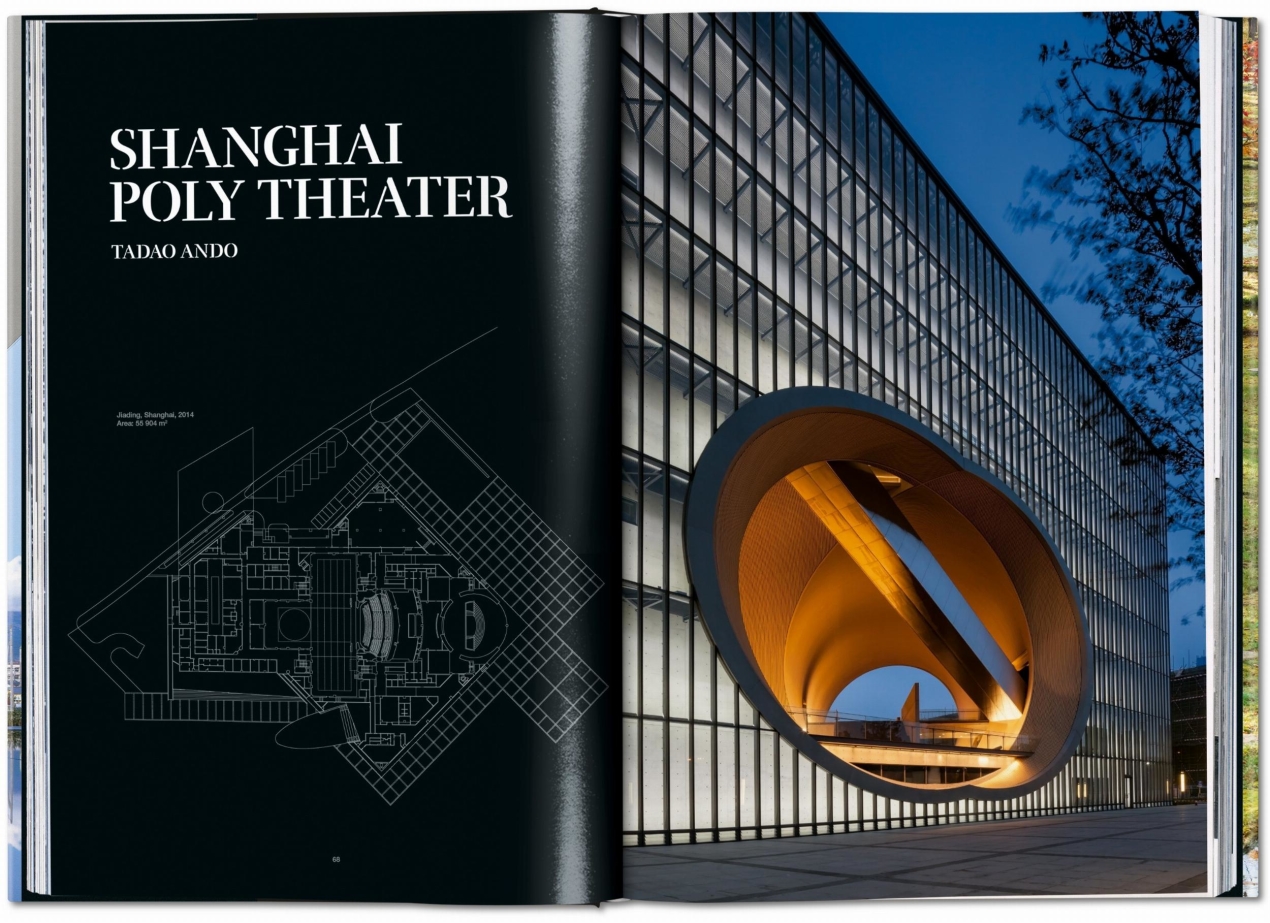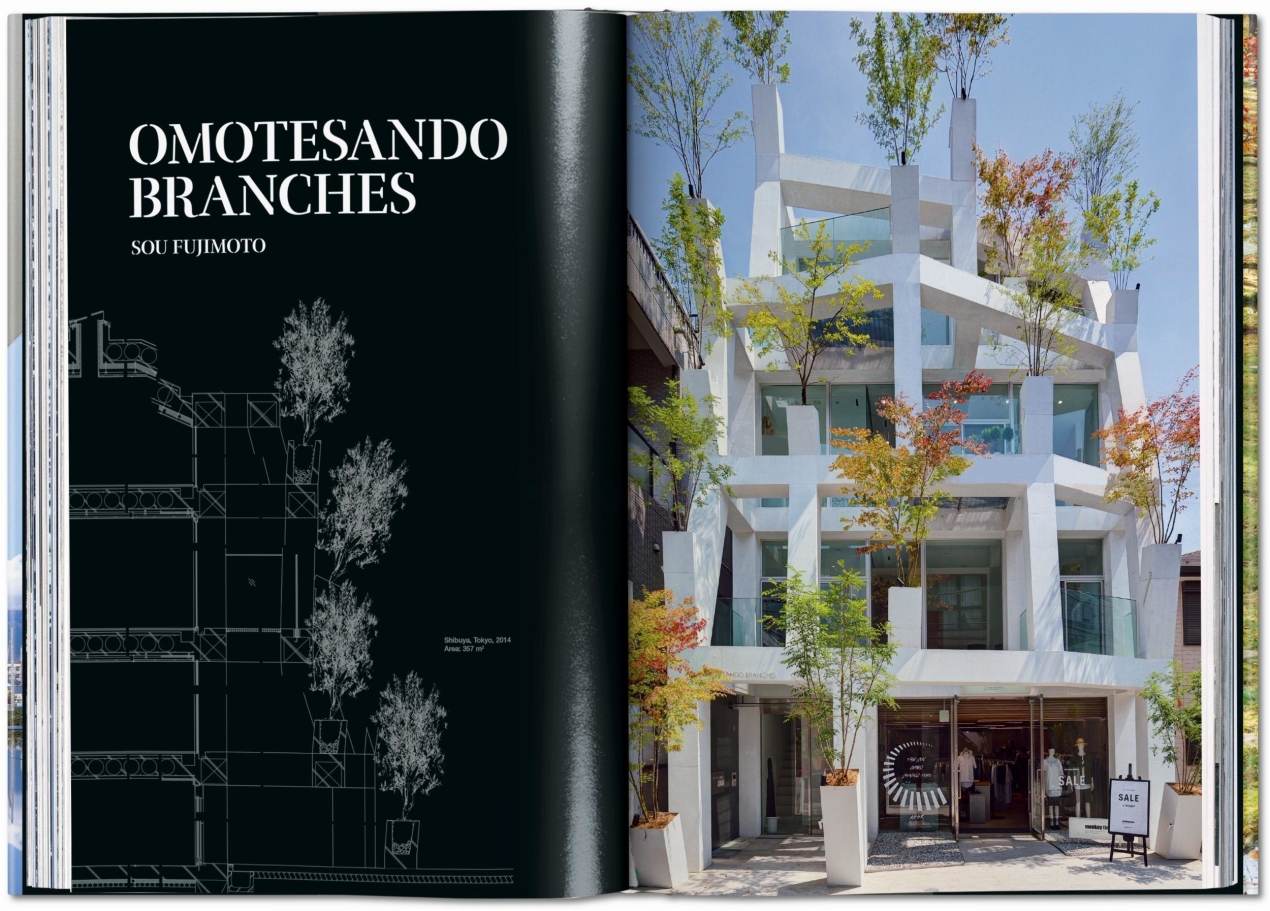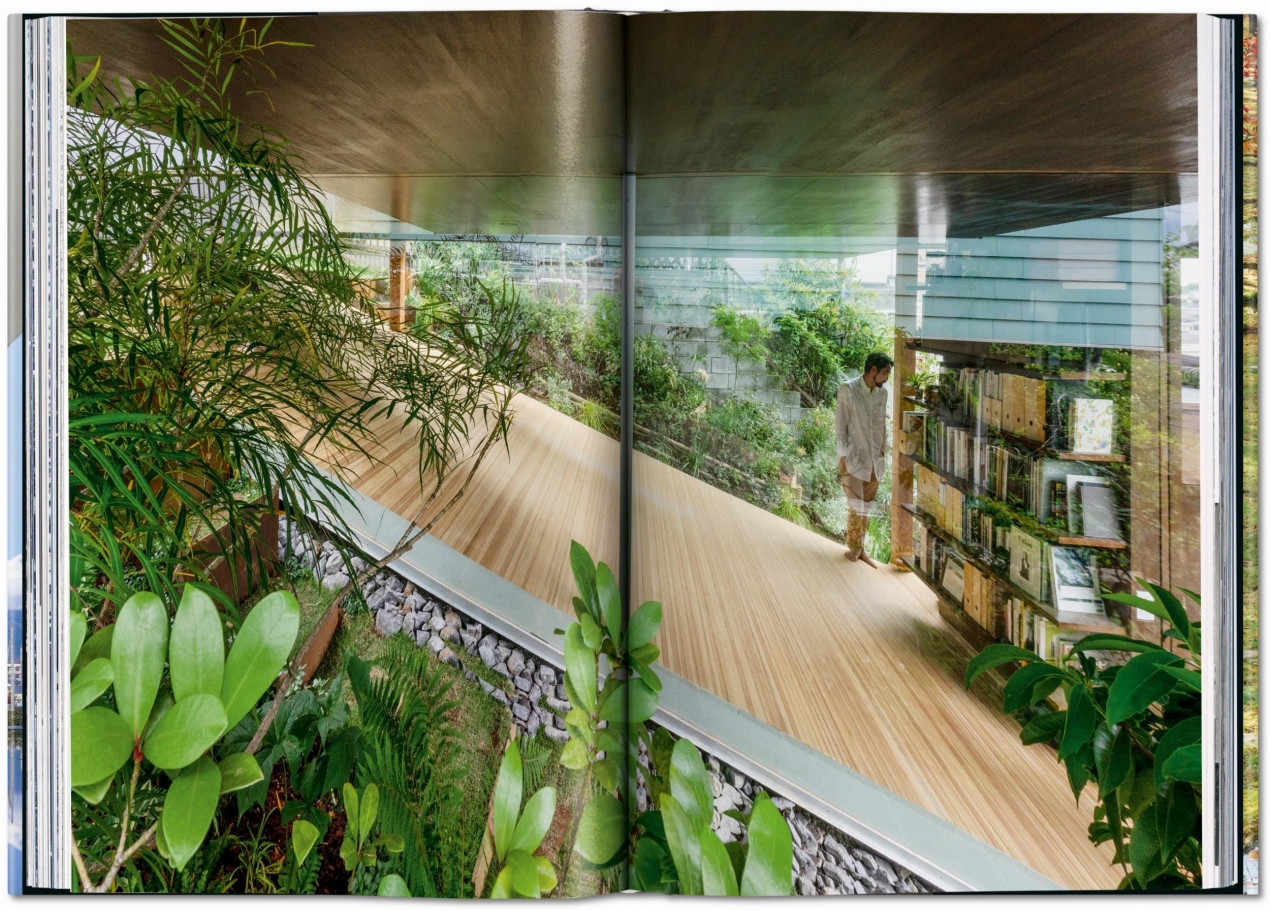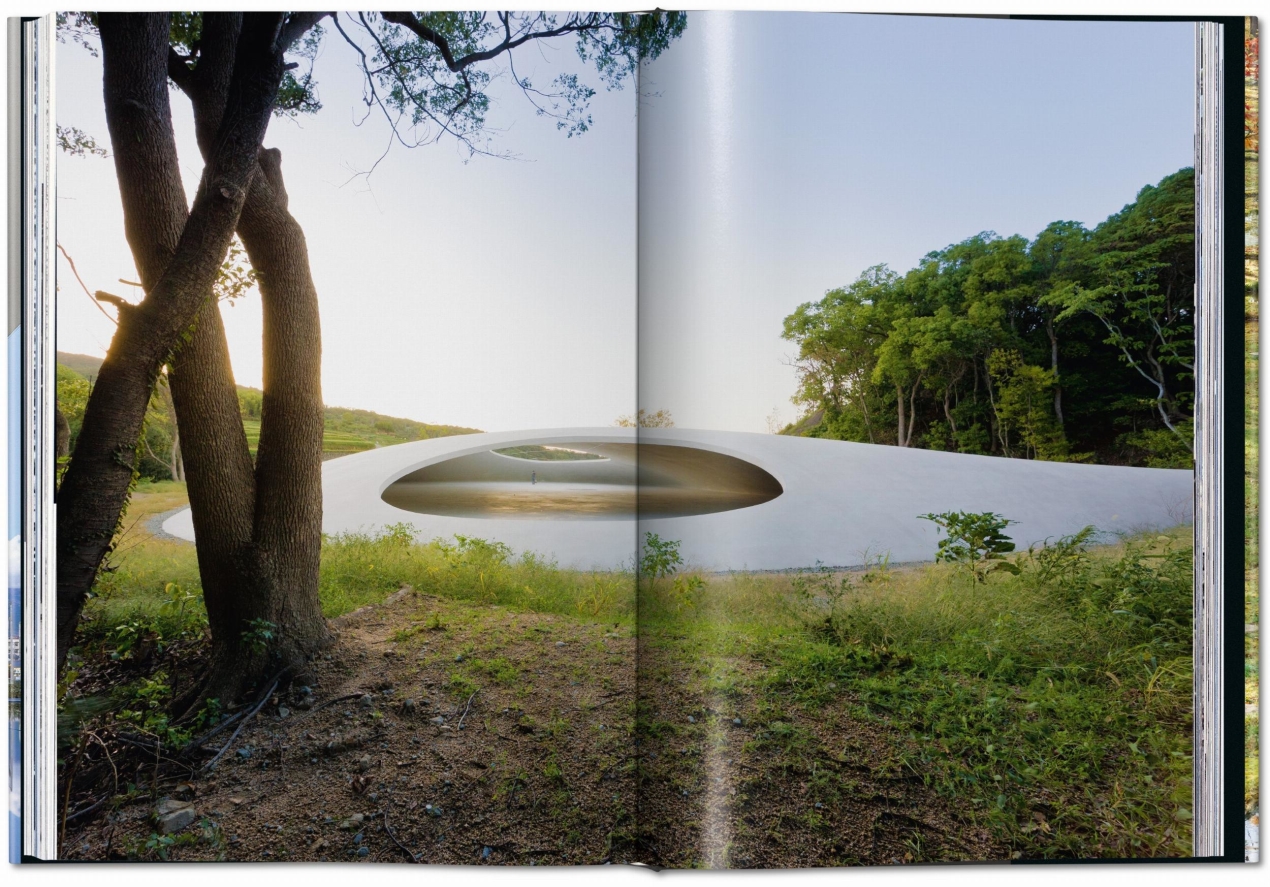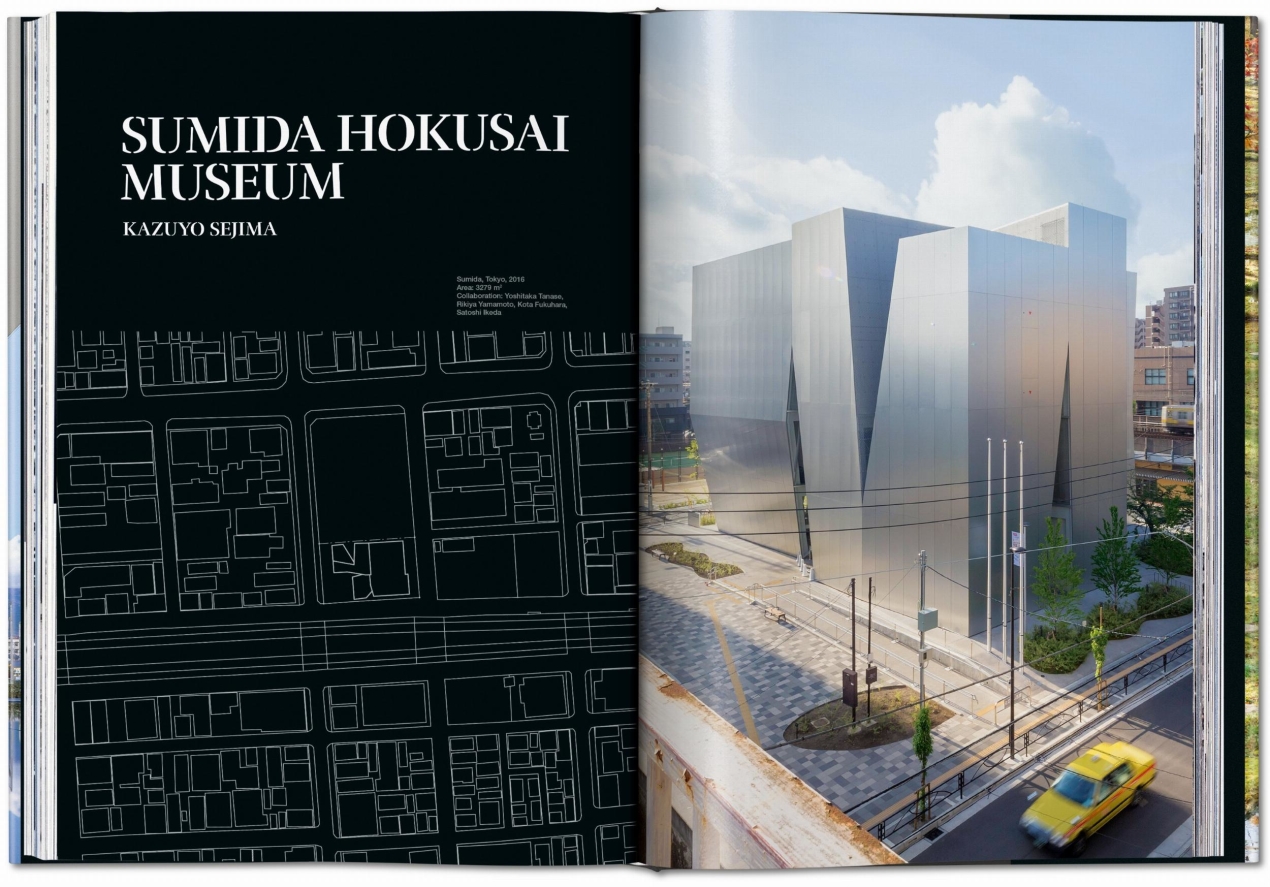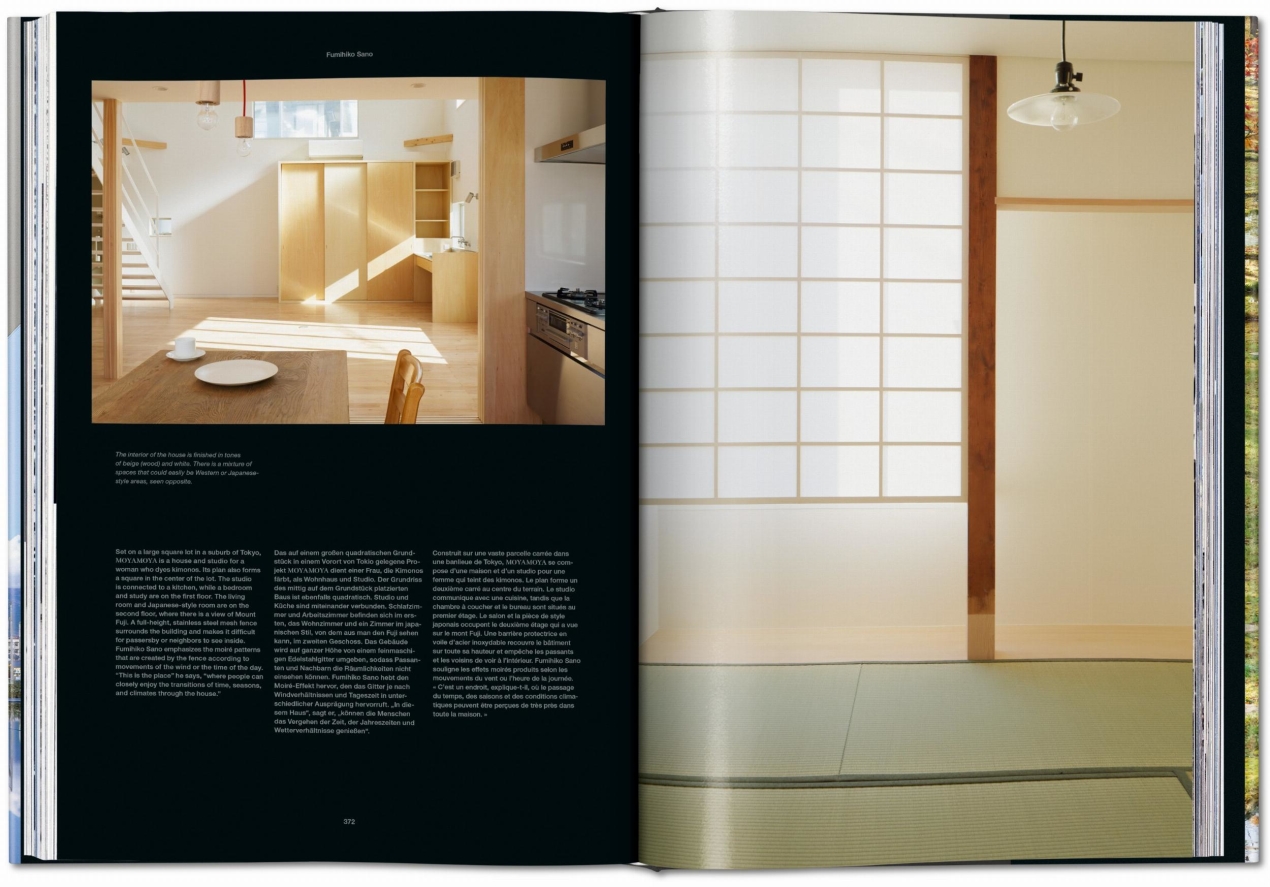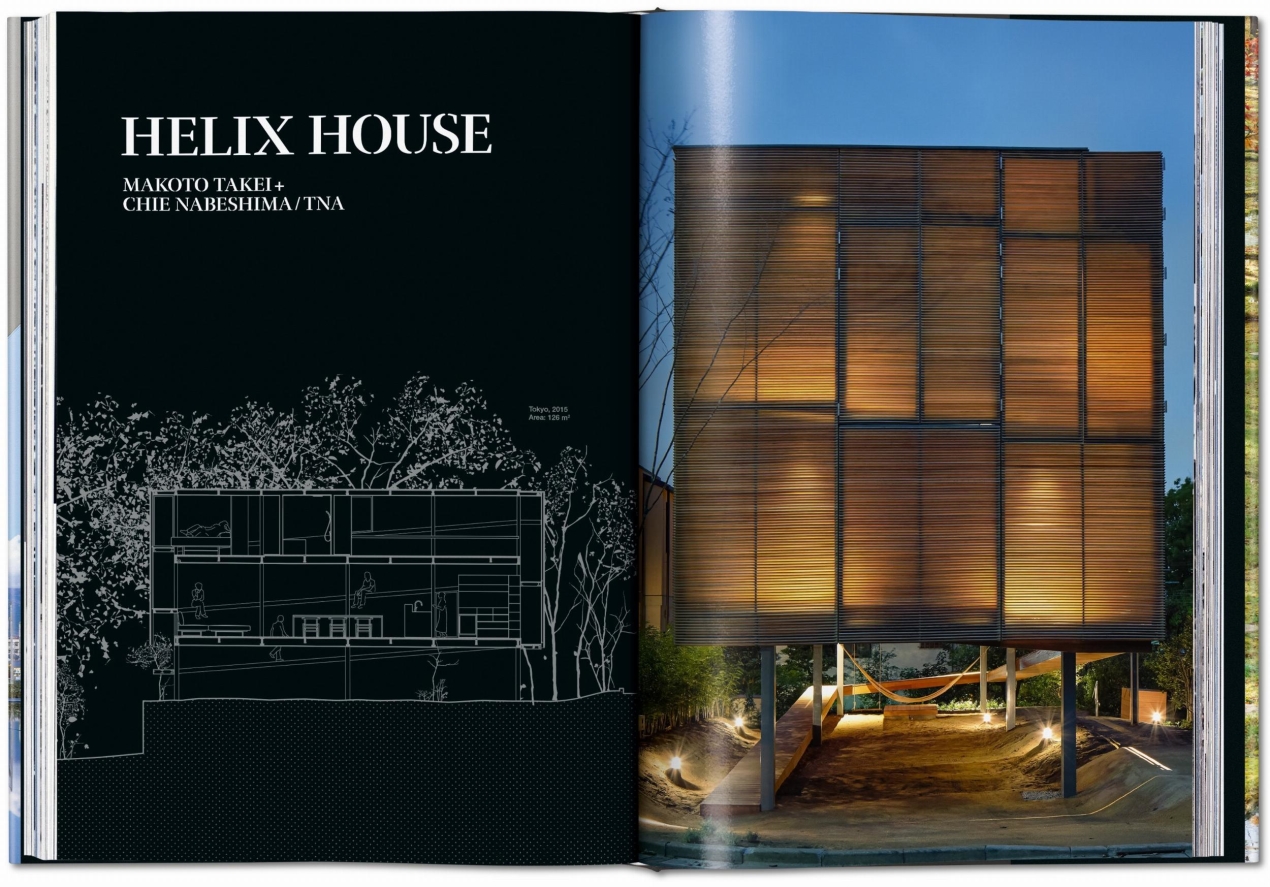1 / 8
XL
I libri XL hanno un'altezza minima di 34 cm, ad eccezione dei titoli in formato orizzontale.
Contemporary Japanese Architecture
80
Inserite qui il vostro indirizzo e-mail e vi informeremo quando saranno disponsibili delle copie:
Grazie all'Esposizione Universale di Osaka del '70 che ha portato le forme contemporanee al centro della scena, il Giappone è diventato protagonista dell'architettura mondiale. Presentando le ultime novità dell'edilizia giapponese, questo libro rivela come artisti del calibro di Tadao Ando, SANAA, Shigeru Ban, Kengo Kuma e Junya Ishigami stiano mettendo in relazione passato, presente e futuro, costruendo in modo più verde e intelligente che mai.
Copertina rigida, 9.7 x 14.6 in., 8.31 lb, 448 pagine
XL
I libri XL hanno un'altezza minima di 34 cm, ad eccezione dei titoli in formato orizzontale.

Contemporary Japanese Architecture
80Modern by Tradition
A survey of Japan’s contemporary architecture scene
The contemporary architecture of Japan has long been among the most inventive in the world, recognized for sustainability and infinite creativity. No fewer than seven Japanese architects have won the Pritzker Prize.
Since Osaka World Expo ’70 brought contemporary forms center stage, Japan has been a key player in global architecture. With his intentionally limited vocabulary of geometric forms, Tadao Ando has since then put Japanese building on the world’s cultural map, establishing a bridge between East and West. In the wake of Ando’s mostly concrete buildings, figures like Kengo Kuma (Japan National Stadium intended for the Olympic Games), Shigeru Ban (Mount Fuji World Heritage Center), and Kazuyo Sejima (Kanazawa Museum of 21st Century Art of Contemporary Art) pioneered a more sustainable approach. Younger generations have successfully developed new directions in Japanese architecture that are in harmony with nature and connected to traditional building. Rather than planning on the drawing board, the architects presented in this collection stand out for their endless search for forms, truly reacting on their environment.
Presenting the latest in Japanese building, this book reveals how this unique creativity is a fruit of Japan’s very particular situation that includes high population density, a modern, efficient economy, a long history, and the continual risk of disasters in the form of earthquakes. Accepting ambiguity, as seen in the evanescent reflections of Sejima’s Kanazawa Museum, or constant change and the threat of catastrophe is a key to understanding what makes Japanese architecture different from that of Europe or America.
This XL-sized book highlights 39 architects and 55 exceptional projects by Japanese masters—from Tadao Ando’s Shanghai Poly Theater, Shigeru Ban’s concert hall La Seine Musical, SANAA’S Grace Farms, Fumihiko Maki’s 4 World Trade Center, to Takashi Suo’s much smaller sustainable dental clinic. Each project is introduced with photos, original floor plans and technical drawings, as well as insightful descriptions and brief biographies. An elaborate essay traces the country’s building scene from the Metabolists to today and shows how the interaction of past, present, and future has earned contemporary Japanese architecture worldwide recognition.
Since Osaka World Expo ’70 brought contemporary forms center stage, Japan has been a key player in global architecture. With his intentionally limited vocabulary of geometric forms, Tadao Ando has since then put Japanese building on the world’s cultural map, establishing a bridge between East and West. In the wake of Ando’s mostly concrete buildings, figures like Kengo Kuma (Japan National Stadium intended for the Olympic Games), Shigeru Ban (Mount Fuji World Heritage Center), and Kazuyo Sejima (Kanazawa Museum of 21st Century Art of Contemporary Art) pioneered a more sustainable approach. Younger generations have successfully developed new directions in Japanese architecture that are in harmony with nature and connected to traditional building. Rather than planning on the drawing board, the architects presented in this collection stand out for their endless search for forms, truly reacting on their environment.
Presenting the latest in Japanese building, this book reveals how this unique creativity is a fruit of Japan’s very particular situation that includes high population density, a modern, efficient economy, a long history, and the continual risk of disasters in the form of earthquakes. Accepting ambiguity, as seen in the evanescent reflections of Sejima’s Kanazawa Museum, or constant change and the threat of catastrophe is a key to understanding what makes Japanese architecture different from that of Europe or America.
This XL-sized book highlights 39 architects and 55 exceptional projects by Japanese masters—from Tadao Ando’s Shanghai Poly Theater, Shigeru Ban’s concert hall La Seine Musical, SANAA’S Grace Farms, Fumihiko Maki’s 4 World Trade Center, to Takashi Suo’s much smaller sustainable dental clinic. Each project is introduced with photos, original floor plans and technical drawings, as well as insightful descriptions and brief biographies. An elaborate essay traces the country’s building scene from the Metabolists to today and shows how the interaction of past, present, and future has earned contemporary Japanese architecture worldwide recognition.
L'editore
Philip Jodidio ha studiato Storia dell’arte ed Economia ad Harvard e per più di vent’anni è stato curatore della rivista d’arte francese Connaissance des Arts. Tra i suoi libri si annoverano la serie Homes for Our Time di TASCHEN e monografie su vari architetti di spicco tra cui Norman Foster, Tadao Ando, Renzo Piano, Jean Nouvel e Zaha Hadid.
Contemporary Japanese Architecture
Copertina rigida, 24.6 x 37.2 cm, 3.77 kg, 448 pagineISBN 978-3-8365-7510-2
Edizione: Multilingue (Francese, Inglese, Tedesco)Scarica qui le immagini del prodotto
5
Japan Alive
28 ottobre 2021
During the pandemic this book allows me to travel to my favorite country and see many places I have already been. Thoughtful and elegant.Einfach fantastisch!
28 ottobre 2021
Erwartungsgemäß sehr gute Fotos - und das eine ganze Menge. Mir gefällt auch, dass redaktionell ausführlich auf die Historie eingegangen wurde.

